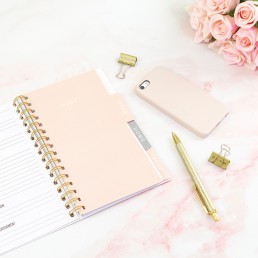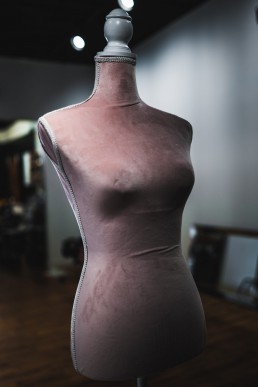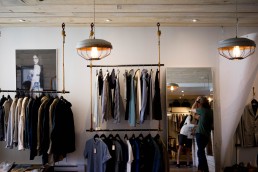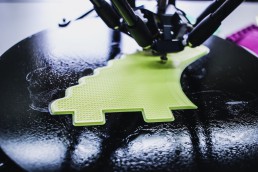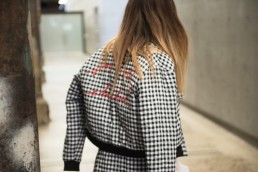6 Things to Take into Account for Successfully Launching a Brand
So you have an idea that you can turn into a business, huh? Well why not take a brief look at some of the aspects you must have under control to succeed at your brand’s launching.
1-Financial Planning
Before launching your brand you must make a sound plan that takes every small expense into account, no exceptions!
2-Study Your Target Audience
How will you find your community if you don’t know who they are? Make sure you find them, and you get to know them as opposed to your competitors. You need to find what they want and give it to them!
3-Set up goals!
Get familiar with SMART goals. Set up achievable goals for you and your team, and do your absolute best to reach them. This will also help you to find data, and re-adapt your plans if needed.
4- Internal Communication
You must be on the same page as your team, it will make every single process easier!
5-Create Expectation
Create a conversation around the launch of your product, surprise your target audience with the answer to their needs! Allow pre-order opportunities as well!
6-Launch Timing
Make sure you can launch on the date you have promised, otherwise you could disappoint a lot of your customers.
Want to know how to create your own brand? Check out our 100% online short course taught by practicing professionals! Click here.
My Experience at ELLE Education

Hello everyone! My Name is Laila Hasan Al Malki. I am 29 years old from Saudi Arabia. I have chosen this course to pursue my passion for fashion, nice rhyming isn’t it? I believe I have a great potential on this field as well as to contribute my modern ideas in empowering young women like me.
I learned a lot during the How to Create a Brand short course such as how to use the tools, keys and special tips in creating a brand name. The guest speakers were truly so inspiring that they serve as an inspiration to all. In any fields, I believe that education plays a major role if you want to achieve your goals and ambitions. Knowledge and experience always comes together.
ELLE Education is the best thing that ever happened to me while in quarantine due to COVID -19 . I am indeed so proud and thankful that ELLE Education became my greatest Mentor. I owe a lot to you and my success is your success, too!
Laila Hasan Al Malki(How to Create a Brand)
Meet your Image Consultant and Personal Shopper Professors!
Our Image Consultant and Personal Shopper short course is one of our most popular ones! It is taught by practicing professionals from all over the world. They share their insights and secrets with all of their students. Learn who they are! Take a look below:
Rossella Oppes- International Image Consultant
A certified Image Consultant graduating from the London Image Institute, this Italian professor is known for her strength in the capability to work with her client’s authenticity, increasing their self-confidence and boosting their image in a natural and stimulating way. She is also a corporate trainer, and works for internationally acclaimed luxury fashion and beauty brands.
Daniel Johnson- Menswear Stylist
Johnson has been transforming and curating the wardrobes of some of the world’s busiest men since 2008. In the 12 years of being in business he has trained with bespoke tailors on Savile Row and luxury retailers on Bond Street, taught personal styling at some of London’s best fashion colleges, has made numerous TV appearances discussing menswear style trends, while styling over 1,500 clients, tailoring over 9,000 garments to fit and has had 15,000 hand-selected garments chosen for his clients.
Cindy Figueroa- Fashion Designer & Fashion Celebrity Stylist
Born in Colombia, she began her great adventure with fashion at Istituto Europeo di Design. She then moved to Milan where she completed a master in fashion design at Istituto Marangoni where she graduated with honors (cum laude).In 2011 she was awarded as the most popular designer in Madrid and that was when she dressed her first Celebrity. Since then, she has been committed to fashion, sustainability and crafts, and today one of her biggest motivations is to exalt all the values of celebrities through what they wear, and reinvent herself every day, learning new things that serve as inspiration.
John William- Online Editor at Beauty Papers
William has been working at the forefront of fashion media for over 15 years. An industry professional, he specializes in journalism, styling, creative direction, trend forecasting and photography. He launched London College of Fashion’s print magazine Pigeons and Peacocks in 2008 and continued to work as the Editor in Chief for the next five years. Editorial clients include: i-D, Vice, The Sunday Times Style, Paper, Puss Puss, Please! and Nylon. For the past decade, John has been working as an Associate Lecturer at the London College of Fashion across a number of BA courses. He also designs and delivers regular fashion media short courses. John William is currently the Online Editor for Beauty Papers.
Katherine Klejman- Financial Analyst
Klejman completed her Bachelor’s degree at University of La Sorbonne in Paris France, she then went to the United States to study Political Science and History at the University of Florida in Gainesville and graduated in 2011. Katherine has 6 years of teaching experience in both public and private schools, she has taught Business English and Spanish to top
professionals of L’Oreal, SWIFT, BNP Paribas and Dragados. Along with teaching, she has worked alongside professionals in the business and finance arena and currently also holds a financial analyst role in the United States.
If you want to know more about this short course certified by ELLE and Mindway Liberal Studies, click here!
Customer Segmentation: Generational Differences of Consumers
Can your generation determine your values? The short answer is no. Brands do everything possible to connect with their consumer, and generations are a way to segment the population in general, although your consumer behavior is not determined by the year you were born in, it is true that separating generations does give brands a clue when it comes to determining the context of the consumer. After all, what makes the difference between generations is the global events they were present for, and their relationship to it. In all, how these events affect their values and perspectives on society. Today we will take a very brief look at the markers between different generations.
GENERATION Z (1998-2016)
Description: Digital natives!
Values: importance on social responsibility, gender equality, sustainability.
What this means for consumer behavior: They expect technology to make their lives easier, and naturally seek technological solutions before direct contact. They value experience above everything! Within a decade, they will represent one third of global consumers and place value on secondary factors such as style, product presentation or sustainability concerns.
GENERATION K (1995-2002)
Description: Digital natives
Values: helping those in need, concern for their surroundings, mistrust of traditional institutions, solidarity, connection.
What this means for consumer behavior: they have a major role in family spending, €535 billion in the US alone. Not very different from Generation Z’s interactions with brands, this being a subsection of such generation.
GENERATION Y/MILLENNIALS (1981-1994)
Description: Remember analog living, but started using the first technologies quite early in their lives.
Values: Wellness and experiences.
What this means for consumer behavior: Not unlike Generation Z, they prefer to communicate through a screen, the majority of their purchases are done online. They love discounts and easy transactions, and experiences! Technology is very attractive in general. Their purchasing power however, is generally low.
GENERATION X (1965-1979)
Description: Have not always lived in a digital environment, but have adapted to it.
Values: cautious money management, skeptical and mistrusting of company messaging.
What this means for consumer behavior: they have a good concept of the value of money, they prefer lower prices and functional products. In 2017, a quarter of them made in-store purchases using their cellphones, showing technology that makes access easier is still highly valued.
In all generational differences can still provide a valuable context for brands to determine how to cater to their customers! Learn more about consumer behavior by joining our Retail Management and Digital Customer Experience Diploma course accredited by Complutense University of Madrid, 100% online, and available worldwide.
Top 5 Skills You Must Have to Succeed as a Retail Manager

German Professor Oliver Eckart, CEO at 2becontinued strategies, specialized Brand & Digitization Consultant for Consumer & Retail, shares with us today the top 5 skills to succeed as a retail manager!
1. Empathy
You must understand consumer/shopper needs, wants, and all relevant trends.
2. Creativity
You will need it for pragmatic problem solving, and for attention to detail to present offering
3. Operational skills
These include: project management, business administration, fast decision-making (retail is detail).
4. Strategic Mind
It is absolutely necessary to see beyond operational day-to-day work as the role of retail will be transformed drastically.
5. Knowledge
Due to current trends, retail professionals must specifically have knowledge in sustainable solutions, ecologically and economically, and in technology to automate standards.
What is the Future for Events?
The future of events looks very different after the global pandemic. We have seen that the importance of being present in person is not as high as being able to attend a communal experience. Online events have brought new opportunities, such as being able to host events with much larger international audiences for less costs. However, that is not to say that this is a “better” or “superior” experience to being on-site, it is just a different way to connect! Take a look at some features of future events post-pandemic.
Virtual or Hybrid Events
As we briefly mentioned before, the sites for events are transforming. We are looking at new options of how to celebrate events, changing how we actually define them. Virtual and hybrid events are here to stay!
Reduced Number of Attendees
With new regulations a number of events will have to change in size, this also gives the opportunity for organizers to create more exclusive experiences in person.
Changing Event Design
The arrangement of a venue will have to look different to adjust to regulations and to make the environment safe for attendees. U-Shape sitting arrangements will be increasing in popularity, but there is also a chance to come up with new ideas, as we have seen with a few concerts where space is reserved for small groups.
Increasing Use of Technology
Apps are changing a lot of traditional interactions in events. Attendees can ask questions to a speaker through apps rather than through a microphone, and badges, tickets, etc. can be replaced with apps that store tickets.
Sanitizing Protocols
These will now be more important than ever, event professionals will now have to think about disinfection stations, minimizing contact as much as possible, and even thermal scanning.
Are you ready to face these challenges? Allow a group of practicing professionals to give you all of their tricks to achieve success in the industry! All 100% online and available worldwide. Enroll in our Event Production course, click here for more information.
Technology Trends in Product Design
Technology is a force that is present in almost every aspect of everyday life nowadays. Huge leaps allow endless possibilities for innovation and creativity, as well as for the optimization of processes. This is especially for the Product Design sector, technology is having a big impact on processes as well as the demands and expectations from the consumer, take a look at the top 5 trends.
Consumer Trends
- Smart Products
Due to convenience more and more consumers are leaning towards the use of smart products. From home appliances to watches, more technology is being embedded into the design of new products to make the consumer’s life easier.
2. Wireless Technology
Similarly to smart products, wireless technology is becoming increasingly popular due to its convenience and aesthetics. The days of finding ingenious ways to hide cables around the house are thankfully becoming a thing of the past.
Industry Trends
3. Globalization
With advances in technology it is much easier to communicate across borders and transport goods. This is very convenient for the industry since the challenge of rising pressure for innovation can be faced with a global market that can provide both quality and aesthetic goods.
4. 3D Printing
As this new technology becomes cheaper Product Designers can test their products before manufacturing them in the early stages of the design process, increasing the quality of products and the efficiency of the process.
5. Engineering Simulation
The numerical analysis available with this technology ensures that products can be tested, analyzed, and optimized virtually by the consumer in the early stages of the design process as well!
Do you want to become a Product Designer and learn the latest practices of the industry from practicing professionals? Check out our 3 month long Product Design short course! 100% online and available worldwide.
Why Enroll in a Course Today?
Do you need a final sign or push to know if signing up for a course is the right choice for you right now? This is it!
We are all afraid to pursue our dreams and fullest potential, success actually comes to those who are courageous enough to push past the fear. A course is only a step towards achieving your goals, but it ensures you will be prepared to face challenges.
At ELLE Education specially, we actually value practical experience on par with academic knowledge. So all of our courses are actually designed and taught by practicing professionals, not only focusing on the academic knowledge available but on their actual steps in their career to get to where they are.
Every single program is thought out to provide you with the frameworks to face professional challenges head on and with lots of confidence. Knowledge simply makes us less afraid to go for what we want, because we can anticipate what is expected of us.
Make this Winter, the Winter you decided to pursue your dreams and ambitions and took the first step towards them!
Enroll for the course that best fits your needs!
As an add-on, if you sign up before September 15th, you will gain exclusive access to a Masterclass taught by ELLE Education Director and Mindway CEO, Francisco J. Lopez Navarrete! Stop aspiring. Start achieving!
The Relationship Between Design Thinking and Innovation
Innovation is the main goal of many companies today. Every brand wants to be the first in doing anything that will disrupt the industry! Today we present design thinking as a path towards putting products out in the market that differ from the competition’s and stand out to your potential customers.
Design thinking is a methodology to come up with innovative product ideas in a fast way. The focus is to solve problems looking at the evolution of the product and its interaction with the user. Stanford’s Institute of Design puts forth the following steps for this groundbreaking methodology:
1-Empathize
A driving force behind design thinking is empathy, specifically with your consumer. If you put yourself in their shoes, see what they see, feel what they feel, you can anticipate and relate to their needs and their expectations when interacting with a product or service.
2-Define
Now that you have taken the first step it is important to take the ideas you had in the first and define them as a set of requirements to fulfill.
3-Ideate
This is the most creative part of the process! Use your imagination to come up with creative ways in which your product can help your potential customers.
4- Prototype
See what the product is actually like, make it a reality and anticipate how the user will interact with the product.
5-Test
This is the final step and the time to see how the product actually goes with the consumer and if there needs to be any changes to adjust to their needs.
In all, the most important takeaway of design thinking is: The consumer and their needs is what will lead you to innovation.
Want to learn how to set up a brand that stands out from the rest, enroll in our How to Create a Brand short course!
Tips to Write the Best Press Release
What makes a press release be picked up by media outlets? Is it luck? Is it wit? Is it good writing? We are not going to lie, there is a luck factor involved in achieving this, but there are techniques and factors that will make your press release more likely to be picked up by a journalist, we will go over them here!
Make sure it answers the questions below
Think from the perspective of the journalist that will read your press release, will it interest the readers? Could this information benefit the community? Is this the right medium for these news?
Timing
A piece of news is “juicy” often if it is released at the right time. What is the right time? Well here is an example, if all media outlets are focusing on how leather is not environmentally friendly, and the brand you work for precisely uses environmentally friendly materials. It is a good time!
Define your goal
The purpose of sharing your press release should be clear: is it to create awareness? For the receiver to write a news article about it? To promote your business?
Style
Make sure you have a “hook” that engages the reader, that you include the most surprising and relevant details, include quotes, and any important or noteworthy profiles!
Become a Marketing and Communications for Fashion and Luxury Brands expert! Check out our diploma course 100% online and available worldwide, and learn all of the tricks of practicing professionals! #studywheneveverwherever

